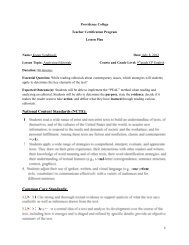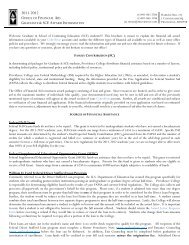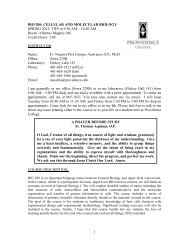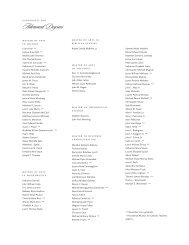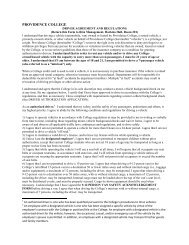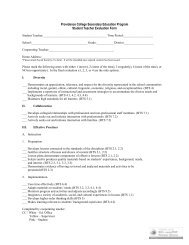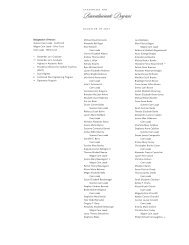Case 1 Acute Aspirin Overdose: Relationship to the Blood Buffering ...
Case 1 Acute Aspirin Overdose: Relationship to the Blood Buffering ...
Case 1 Acute Aspirin Overdose: Relationship to the Blood Buffering ...
You also want an ePaper? Increase the reach of your titles
YUMPU automatically turns print PDFs into web optimized ePapers that Google loves.
CASE 1 <strong>Acute</strong> <strong>Aspirin</strong> <strong>Overdose</strong>: <strong>Relationship</strong> <strong>to</strong> <strong>the</strong> <strong>Blood</strong> <strong>Buffering</strong> System.<br />
was required. You carry out a gastric lavage at pH = 8.5 and administer fur<strong>the</strong>r activated<br />
charcoal treatments, one every 30 minutes. A bicarbonate drip was required <strong>to</strong> prevent <strong>the</strong> blood<br />
bicarbonate concentration from dropping below 15 mM. After 12 hours, blood salicylate<br />
concentrations began <strong>to</strong> decrease. The patient’s blood pH begins <strong>to</strong> drop around 24 hours after<br />
<strong>the</strong> aspirin ingestion and finally returned <strong>to</strong> normal at 60 hours after <strong>the</strong> ingestion, although<br />
salicylate concentrations did not fall <strong>to</strong> zero until about 80 hours after aspirin ingestion.<br />
Questions<br />
1. <strong>Aspirin</strong>, or acetylsalicylic acid (structure shown in Figure 1.1), is hydrolyzed in <strong>the</strong> presence<br />
of aqueous acid and s<strong>to</strong>mach esterases (which act as catalysts) <strong>to</strong> salicylic acid (<strong>the</strong><br />
pharmacologically active form of <strong>the</strong> drug) and acetic acid. Write <strong>the</strong> balanced chemical<br />
reaction for this<br />
transformation.<br />
Figure 1: Structure of aspirin<br />
2. Since <strong>the</strong> patient was brought in<strong>to</strong> <strong>the</strong> emergency room only two hours after <strong>the</strong> overdose,<br />
you suspect that her s<strong>to</strong>mach might contain undissolved aspirin that is continuing <strong>to</strong> be<br />
absorbed. The fact that she is experiencing severe respira<strong>to</strong>ry alkalosis 10 hours after <strong>the</strong><br />
ingestion confirms your suspicion and you decide <strong>to</strong> use a gastric lavage at pH 8.5 <strong>to</strong><br />
effectively remove any aspirin that still remains in <strong>the</strong> s<strong>to</strong>mach.<br />
a. Calculate <strong>the</strong> percentage of pro<strong>to</strong>nated and unpro<strong>to</strong>nated forms of salicylic acid at <strong>the</strong> pH<br />
of <strong>the</strong> s<strong>to</strong>mach, which is usually around 2.0.<br />
b. Calculate <strong>the</strong> percentage of pro<strong>to</strong>nated and unpro<strong>to</strong>nated forms of salicylic acid at <strong>the</strong> pH<br />
of <strong>the</strong> gastric lavage. How does <strong>the</strong> gastric lavage at pH 8.5 facilitate removal of aspirin<br />
from <strong>the</strong> s<strong>to</strong>mach? Explain. (Note: Assume that <strong>the</strong> pK a values for <strong>the</strong> carboxylate group<br />
in salicylic acid and acetylsalicylic acid are <strong>the</strong> same.)<br />
3. It has been shown that salicylates act directly on <strong>the</strong> nervous system <strong>to</strong> stimulate respiration.<br />
Thus, our patient is hyperventilating due <strong>to</strong> her salicylate overdose.<br />
a. Explain how <strong>the</strong> salicylate-induced hyperventilation leads <strong>to</strong> <strong>the</strong> values of pO 2 and pCO2<br />
symp<strong>to</strong>ms seen in <strong>the</strong> patient.<br />
2




